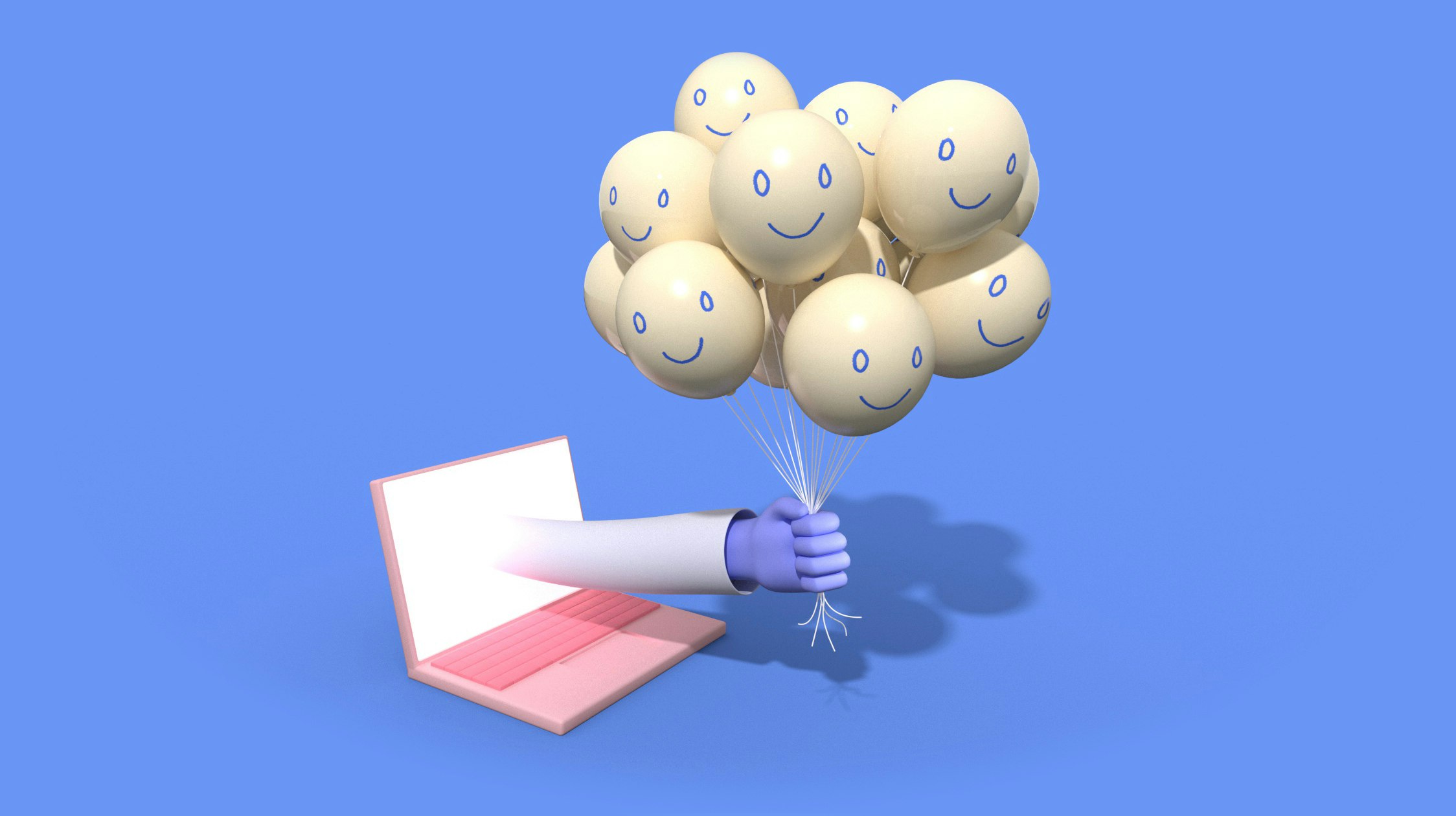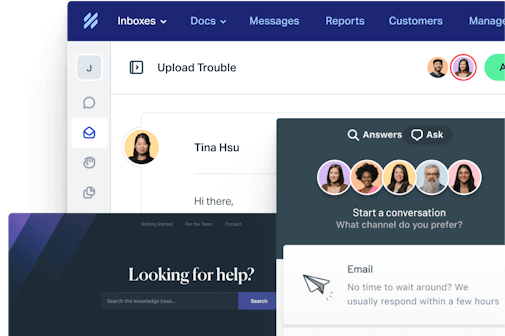Managing customer retention is an incredibly important part of growing a sustainable business. According to research from Harvard Business School, increasing customer retention rates by only 5% increases a company’s profits by 25-95%.
Poor customer retention is similar to filling a bucket with holes in the bottom: sure, you could keep piling on to make up for it, but you’re much better off figuring out what caused the holes and how you can patch them up.
What is customer retention?
Customer retention is a variety of activities aimed at keeping customers for the long term and turning them into loyal buyers. The end goal is transforming first-time customers into repeat customers and maximizing their lifetime value (LTV).
Why is customer retention important?
Being mindful of customer retention matters because it helps you understand how loyal and satisfied your customers are, how strong your customer service is, and if there are any red flags that may turn off potential customers.Focusing on customer retention pays dividends in the long run:
Lower cost compared to customer acquisition – As Econsultancy reports, 82% of companies state that customer retention is far cheaper than customer acquisition, yet many companies spend much more on acquisition instead of nurturing customers they already have.
Increased AOV – Not only is it much more cost-effective to retain current customers, but those shoppers are also willing to spend more as time goes on. Research shows that loyal customers are 23% more likely to spend with you than the average customer.
Increased profits – Taking care of customers and keeping them over time will also have a positive impact on your bottom line. Data shows that increasing customer retention by 5% can increase profits anywhere from 25% to 95% and that existing customers provide 65% of a company’s business.
Brand ambassadors – The best thing about loyal customers is that they tend to share their positive experiences, thus becoming your brand ambassadors. That’s priceless. According to Yotpo, 60% of consumers talk about a brand they’re loyal to with their family and friends. As word of mouth increases exponentially, customer retention is a must-have for your business.
How to calculate your customer retention rate
Customer retention rate (CRR) shows the percentage of customers that a company has retained over time.
To calculate your CRR, you should subtract the number of new customers acquired from the number of customers remaining at the end of the period. To calculate the percentage, divide that number by the total number of customers at the start and multiply by 100.

CRR = ((Customers at end of period - New customers during this period) / Total customers at the start of the period) x 100
Customer retention rate is the flip-side to customer churn, which represents the percentage of customers a company has lost over a specific period.
16 customer retention strategies that work
Retaining customers costs less than acquiring them, and both add to your company’s bottom line. So before you go all-in on tactics designed to get new prospects into your sales pipeline, consider using one of these 16 research-backed customer retention strategies to grow your revenue by keeping the customers you already have.
1. Stand for something
Very few customers feel they have relationships with the brands they purchase from and use. In fact, a study by the Corporate Executive Board that included 7,000 consumers from across the U.S. found that only 23% of consumers have a relationship with a brand.
Interestingly, 64% of the consumers who said they have a relationship with a brand cited shared values as the primary reason for that relationship.
Most people prefer products and companies that resemble them in some way. This cognitive bias is called implicit egotism and is an important thing to keep in mind.
Customers are more likely to ignore you if your company doesn’t stand for anything. If you want loyal customers, you need to create real connections with them by letting them know what values you share.
For example, in 2019, we completed the process of becoming a certified B Corp. The certification both keeps us aligned to our values as a company and shows our customers that our purpose is not only profit but also a positive impact for employees, communities, and the environment.
As Nick Francis writes:
“There’s no such thing as being ‘above politics’ or not taking sides as a brand. It would be great if companies didn’t have political agendas, but they inevitably do. And if companies are inevitably political, then we want to be deliberate about the things we stand for."
What does your company stand for? If you define your values and highlight them as part of your brand, it will be easier to retain the customers who share those values.
2. Collect feedback with customer surveys
The best way to find out what customers think about your business is to ask them. Using customer surveys to collect feedback and diagnose potential dissatisfaction is a great starting point to understand what needs to be fixed in your overall online experience.
Customers appreciate it when you ask them for their opinion. It means you care and that you’re ready to go the extra mile to keep them.
3. Capture your product’s momentum
When exciting improvements are being made to your product, everyone in the company feels the momentum. But do your customers feel the same way?
They won’t unless you take the time to share your work.
Create excitement with current customers by showing them what your latest features will help them accomplish.
For example, as we prepared to introduce major improvements to our Beacon product in 2018 (such as the addition of live chat), we ran a series of preview posts (like this and this) to generate excitement about everything customers would be able to accomplish with the new tools.
Not only does this build momentum for upcoming releases, but it also helps promote new features that existing customers might otherwise miss.
4. Don’t just sell — educate
The last thing you want to do is leave customers to fend for themselves after they’ve signed up. It’s crucial to offer resources that make it easy for new customers to learn how to use your product.
There are a lot of different ways to train new customers on how to use your product:
Offer in-product onboarding with tips and tutorials designed to help new customers get started.
Send a series of lifecycle emails designed to guide new customers through the process of learning how to use your product.
Provide one-on-one training sessions with customer support, sales, or an onboarding specialist.
Create an online academy of training resources for new customers who prefer self-service training.
Build a community of product experts that new and long-time customers alike can turn to when they have questions.
At Help Scout, we offer recurring 45-minute live classes that new customers can register for in order to learn more about our product and ask any questions they have.
5. Communicate with your customers
Constant communication with customers via their preferred channel is the key to online customer retention. Today, there are 4.2 billion email users worldwide, and even though social media is very popular, email is still customers’ preferred communication tool. It’s also the best performing channel with a reported $44 return on investment for every $1 spent.
Regardless of where you communicate with customers, it’s important to be consistent and to leverage personalization whenever possible for spot-on relevancy.
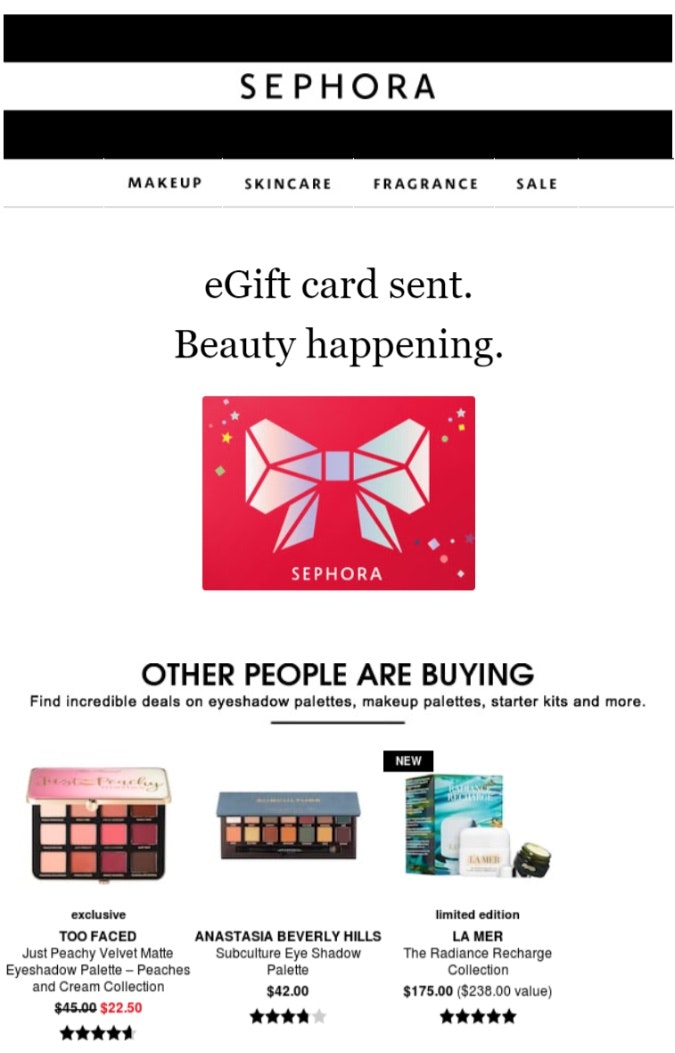
6. Leverage personalization
A brand’s success depends on the ability to offer a unique, personalized journey for the customer. According to Salesforce, “79% of customers are willing to share relevant information about themselves in exchange for contextualized interactions in which they’re immediately known and understood.”
Getting customers to create an account is a great way to learn more about them and offer them a personalized experience that will encourage them to make a purchase from your company. Another simple way to add a sense of personalization is by using product recommendations based on customer behavior.
7. Deliver surprise reciprocity
Reciprocity is the social construct that makes the world go ‘round and keeps customers coming back.
The concept of reciprocity is simple: people respond based on how they’re treated. When someone is treated nicely, they respond nicely. When they’re treated poorly, they respond poorly.
It’s no wonder then that consistently good service is one of the biggest drivers of repurchases and recommendations.
And while reciprocity works incredibly well on its own, research shows it’s far more powerful when it’s a surprise. Recall a time that someone did something nice for you unexpectedly. The gesture probably wasn’t all that unusual, but the fact that it came out of nowhere likely left a strong impression on you.
Brainstorm some ways you can surprise your customers with a kind gesture. For example, at Help Scout, we occasionally send handwritten notes and swag to our customers just to say thank you.
Thank-you notes are a rare throwback to old-fashioned, personal customer service; they stand out as a delightful gesture that makes customers feel special and cared for. The relationship-building is well worth the relatively minimal investment.
8. Offer fast delivery and easy returns
When it comes to ecommerce, delivery and returns are two of the biggest consumer concerns. The way you manage last mile delivery can help you stand out from the competition and retain customers.
However, there will be situations when customers want to return and replace the product. Simplifying that process will give your customers peace of mind and also encourage them to come back to your ecommerce store.

9. Find ways to delight your customers consistently
Discounts and freebies are a great way to delight your customers, but they can be costly. Instead of leaning too heavily on these delighters, you should embrace the art of the frugal wow — creating reciprocity through small, thoughtful gestures.
In fact, psychologist Norbert Schwarz found that as little as 10 cents can create reciprocity between two individuals. It really is the thought that counts.
One small way we try to consistently brighten our customers’ days is by building what we call “huzzah" images into our product — a fun illustration and caption that appears when customers reach inbox zero.
It may seem like a small thing, but if you can make people feel good about using your product, they’ll be more likely to stick around.
Another example: in a study from the Journal of Applied Social Psychology, researchers found that waiters and waitresses could increase their tips by 23 percent through the simple act of returning to tables with a second set of mints.
10. Provide exceptional customer service
Many companies assume exceptional customer service can only be achieved by going above-and-beyond — that loyalty is built on showy gestures.
But according to research from Dixon, Toman, and DeLisi published in The Effortless Experience, the true driver of customer retention and loyalty is the ease of getting a problem solved.
Delight isn’t the foundation of a customer service strategy; it’s a second-order effect. First, focus on consistently meeting expectations and avoiding unpleasant surprises. Then go the extra mile. Here are a few more tips.
Provide support on the right channel(s). It’s important to make sure you’re providing support on the channels that make the most sense for your business and your customers. Hosting companies, for example, know that live chat is critical when their customers’ sites go down; other companies may have customers who prefer using self-service, or even phone support.
Make customer support a communal effort. Countless case studies have made one thing clear when it comes to creating an efficient support system: you need to keep everybody in the loop.
At Help Scout, we use our integration with Slack to access real-time notifications of what’s happening on the customer end. We were able to improve our response time by 340% (not a typo!) by creating a support channel for all of our teammates.
11. Accept that speed is secondary to quality
When it comes to highly rated customer service, quality and completeness matter more than speed.
According to research from Gallup, customers were nine times more likely to be engaged with a brand when they evaluated the service as “courteous, willing, and helpful." “Speedy" service, on the other hand, only made customers six times more likely to be satisfied.
Telling your team to spend more time with customers might seem counterintuitive, but numerous behavioral psychology studies have shown that everyone views their service experience as more positive when they don’t feel rushed or ignored.
Whether you’re responding to support requests or delivering new features, speed is only delightful if you’re delivering exactly what your customers need. You’ll do more damage than good by rushing and delivering something that creates more problems than it solves.
In fact, research conducted by John Goodman found that customers were much more sensitive to price changes — and thus more likely to churn — when they experienced a few problems with the product or the support they received.
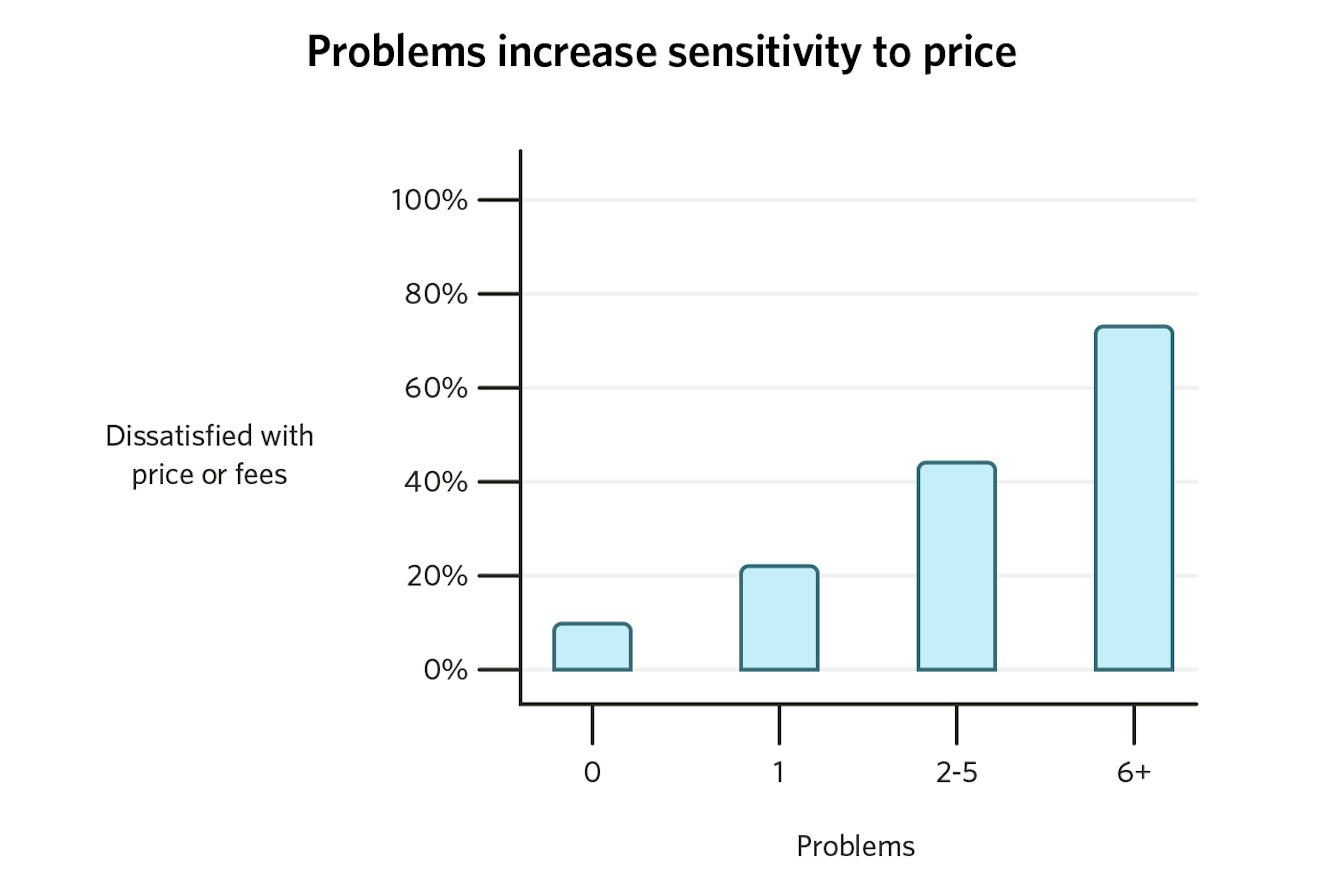
12. Use subscriptions to keep customers coming back
Another customer retention strategy is using a subscription model. According to McKinsey, “15 percent of online shoppers have signed up for one or more subscriptions to receive products on a recurring basis.”
To get ecommerce customers on board with the idea of a subscription, consider offering something special and exclusive or a product that they’ll constantly use and replenish.
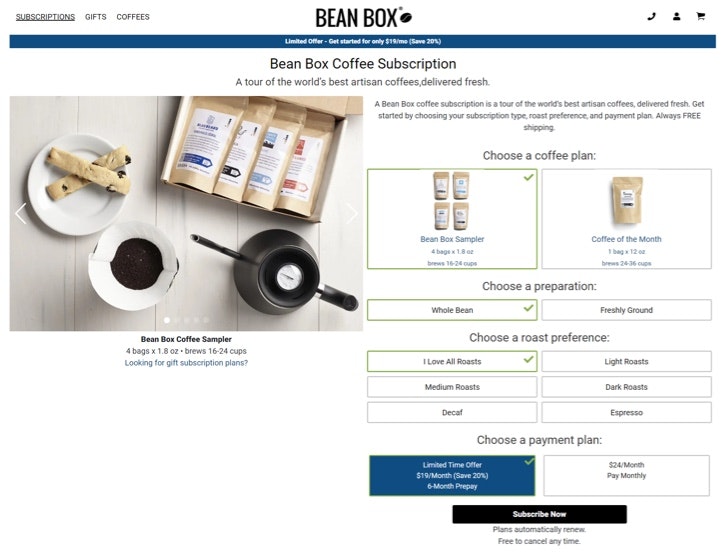
13. Build your customer loyalty programs the right way
The key to creating loyalty programs that work is to know why customers use them and what gets customers to keep using them. Luckily, there’s a ton of research on customer loyalty programs that you can use to set your program up correctly from the start.
Give loyal customers a head start. Consumer researchers Joseph Nunes and Xavier Dreze are known for their studies on the Endowed Progress Effect. Their results have conclusively shown that the biggest pitfall in preventing customer loyalty programs from succeeding is getting people started. In their well-known car wash study, participants were twice as likely to finish loyalty cards when they were automatically started (or rewarded) as soon as they signed up.
Make ideal customers VIPs. Additional research by Dr. Nunes on retention programs has shown that people love being VIP or “gold" members. There is one caveat, though — this only works when people know there is a class below them on the totem pole. Speaking to human nature, Nunes saw a notable increase in gold members’ participation as soon as he implemented a silver class.
Assign your customers positive labels. Research on voting patterns conducted by Stanford University revealed people are more likely to participate in something if they are labeled with a positive trait. Buffer refers to their premium customers as “awesome" members and even named their upgraded payment plan the “Awesome Plan."
14. Turn negative into positive
Being persistent pays off. Don’t give up on customers who leave your website before making a purchase or subscribing. When using an abandoned cart email, always have in mind that the end goal is to recover the customer, not the sale.
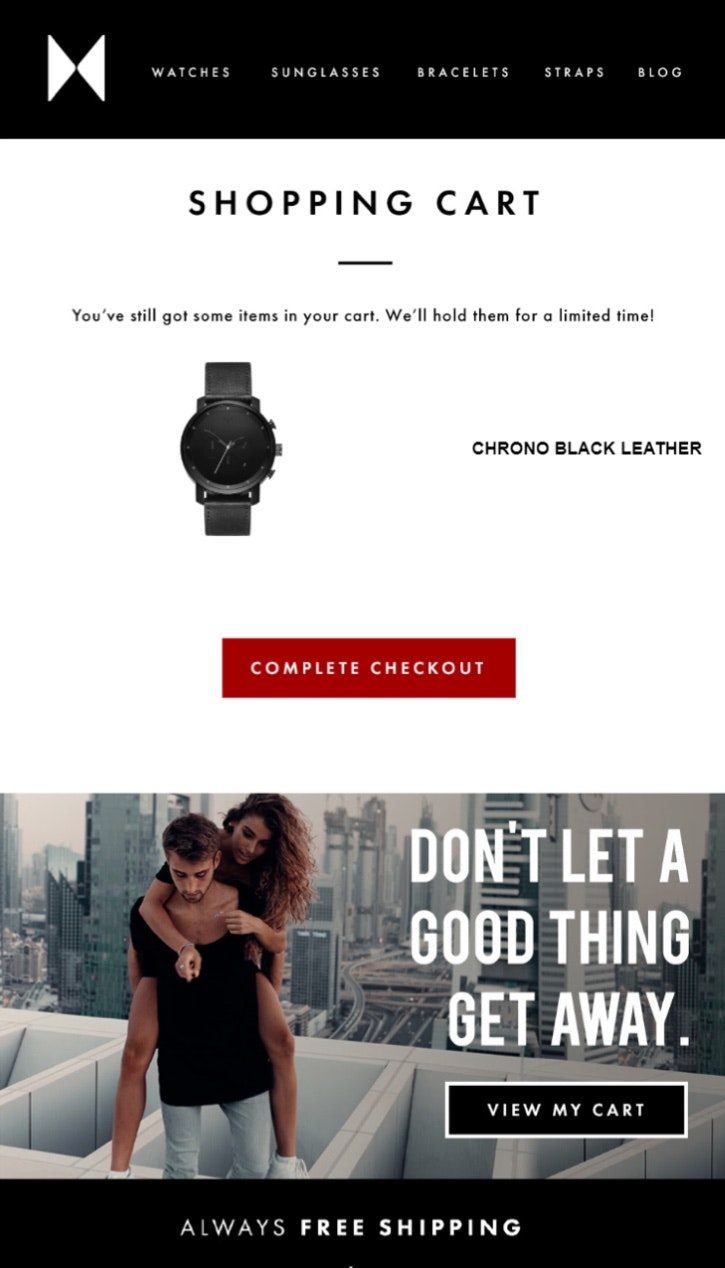
Another great tactic is to solve customer complaints and turn them into loyal customers. Staggering data shows that “95% of unsatisfied customers will return to a company if it manages to solve the issue quickly and efficiently,” so be proactive!
15. Reward your loyal advocates
When your customers go out of their way to recommend your product or service to others, let them know that you see and appreciate it! If you spot someone recommending your business on social media, for example, reply to say thanks. It shows you’re paying attention and that their testimony means something to you.
Another way to recognize your brand advocates is with a referral program. For example, we give our customers a $100 Amazon gift card when they refer someone who becomes a customer (and that new customer gets a $50 credit on their account).
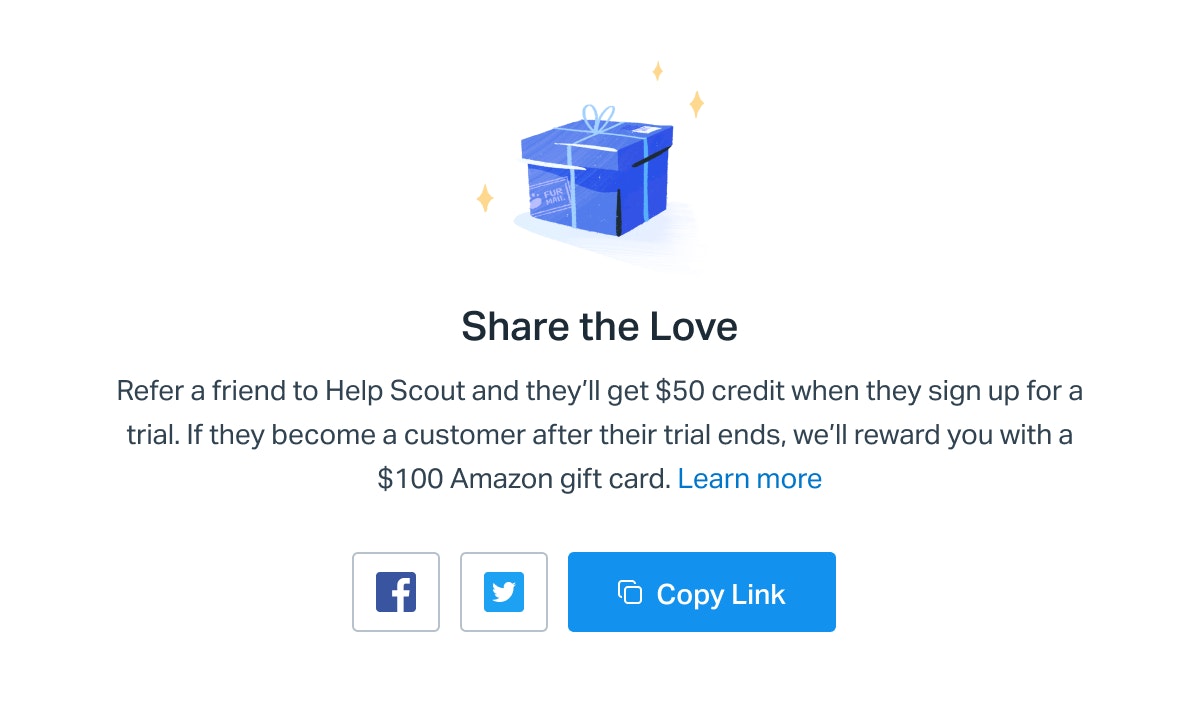
16. Over deliver on your promises
To wrap up the list, we’ll just say this: Over deliver on your promises. Customer expectations have hit all-time highs, and the only way to be competitive is to be willing to go above and beyond to create the best online shopping experience. That is the only way to keep customers coming back for more.
Retaining customers is a balancing act
There are many customer retention strategies, but there are no shortcuts. You can’t hack a personal relationship, so why should we assume business relationships are any different?
The bottom line is that the strategies above should hopefully give you some fresh ideas for approaching retention, but they’re not a cure-all. Your product and service will do most of the heavy lifting in keeping customers loyal, and there are no shortcuts for that.


